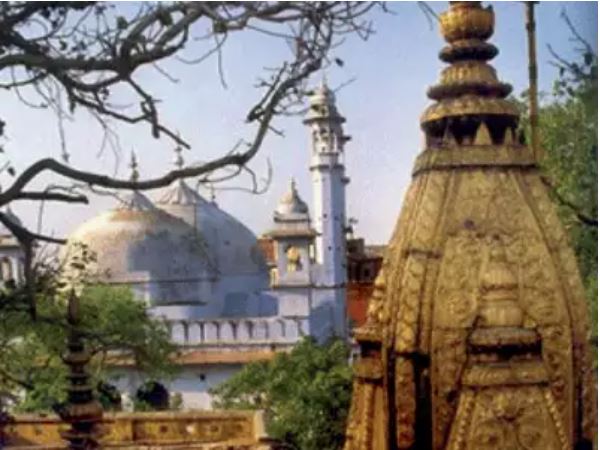A special leave petition filed in the Supreme Court has challenged the Allahabad High Court order and sought direction to the Archaeological Survey of India, to ascertain the nature of the structure found in the Gyanvapi complex.
Filed under Article 136 of the Constitution, the SLP challenged the Allahabad High Court verdict, dismissing the petition seeking establishment of a committee/panel headed by a retired or sitting judge of the Supreme Court or a High Court to ascertain the truth regarding the structure found in the Gyanvapi complex in Varanasi.
The petitioner sought to ascertain before the High Court, as to whether the structure was a Shivling, as being claimed by the Hindus or a fountain, as being claimed by the Muslims.
The plea had also asked the High Court to give permission for praying, if it was a Shivling, or make it functional, if it turned out to be a fountain.
The SLP before the Apex Court contended that the Shivling was a religious symbol of Lord Shiv, which was worshipped not only by Hindus, but several people of other communities.
It claimed that ever since the structure was found, the Hindus, calling it as Lord Vishwewar, have been wanting to visit and worship the Lingam.
The SLP further mentioned that since the Lingam was being kept at the Wazukhana (ablution pond), where the water discharged out of Wazu, a process related to washing of hands, legs and mouth was being collected, there was anger among the members of the majority community.
As per the SLP, since the impugned structure was certainly more than 100-years-old, it needed to dealt with under the provisions of the Ancient Monuments and Archaeological Sites and Remains Act, 1958.
It said after the emergence of the impugned structure, it was the duty of ASI to go on the spot and ascertain the nature of the impugned structure, but as it was not done, a committee/commission under the chairmanship of a judge of either the High Court or the Supreme Court may be appointed to ascertain its nature.
The SLP went on to allege that the High Court Bench of Justice Rajesh Singh Chauhan and Justice Subhash Vidyarthi was improperly formed.
It said one judge of the bench was appointed under Article 217 of the Constitution and another was an additional judge appointed under Article 224 of the Constitution. Therefore, the verdict was ‘nullity’ in the eyes of law as it was delivered by a bench of two unequal judges, added the SLP.


